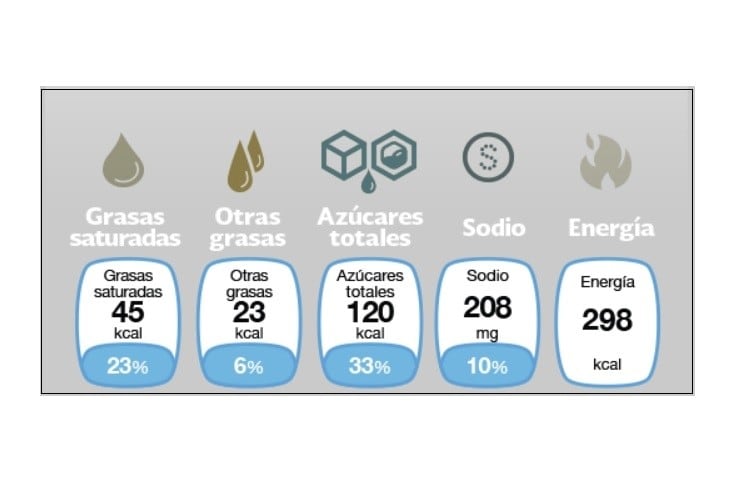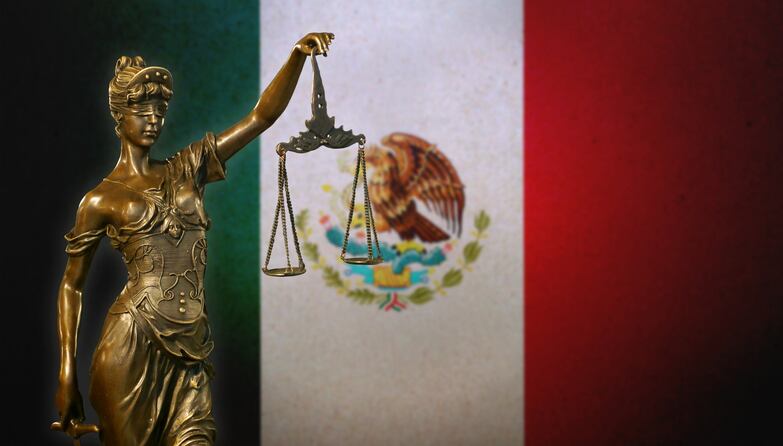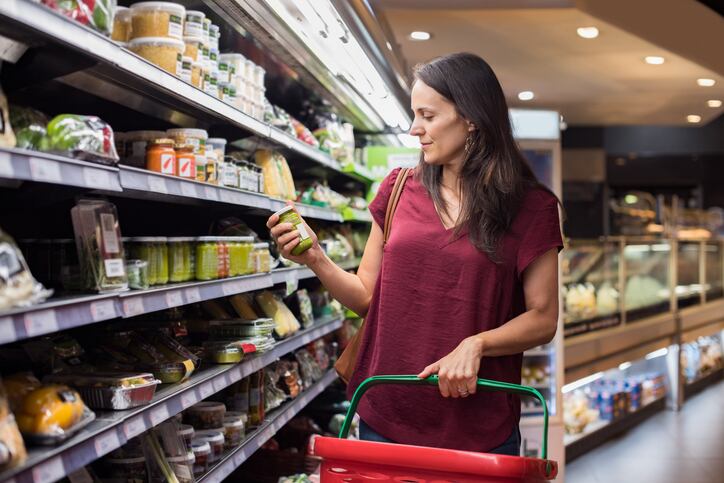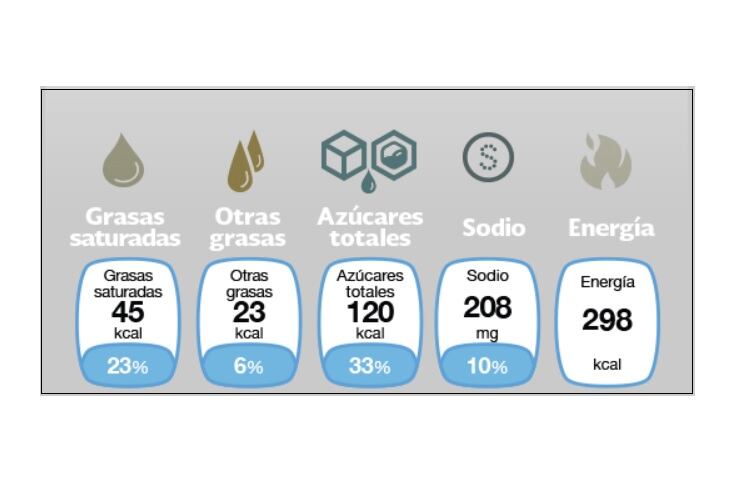The second chamber of Mexico’s highest court, the Supreme Court of Justice of the Nation, ruled yesterday in favor the country’s System of Frontal Labeling of Food and Beverages (SEFAB), with a majority of three votes to two.
The SEFAB label graphically and numerically represents the fat, saturated fat, total sugar and calorie content per portion, and guideline daily amounts are referenced against a 2,000-calorie diet.

The decision is a blow to civil society organization El Poder del Consumidor, which had challenged the legality of the nutrition label on the grounds it violated Mexican citizens’ right to health and failed to clearly communicate the caloric percentage of packaged foods.
These claims could not be determined, the Court ruled.
El Poder del Consumidor deeply regretted the ruling, which it said favored the interests of Big Food over public health in the midst of an obesity epidemic.
“No body free from conflicts of interest would support the draft judgment of the Supreme Court of Justice of the Nation, setting a terrible national and international precedent,” it said.
El Poder del Consumidor, which wants to see warning nutrition labels (in place in Chile, Uruguay and Peru) in Mexico, said it will challenge the Supreme Court ruling at the Inter-American Commission on Human Rights (IACHR).
ConMéxico: 'Good news for all Mexicans'
Mexico’s manufacturing sector and food industry, however, welcomed the decision. The Confederation of Industrial Chambers (CONCAMIN), National Association of Manufactures (CANACINTRA) and Mexican Council of Consumer Goods (ConMéxico) said the Supreme Court ruling displayed a “technical and reflective analysis”.
"This resolution is good news for all Mexicans. This confirms that the nutritional information contained in the labels of food and non-alcoholic beverages is correct, truthful and transparent," said ConMéxico president Jaime Zabludovsky.
Aligned with international guidelines?
According to ConMéxico, the SEFAB nutrition label follows the best international recommendations on the subject, including those by the World Health Organization and the Codex Alimentarius.
However, this week, two United Nations agencies, The Food and Agriculture Organization (FAO), the Pan American Health Organization / World Health Organization (PAHO/WHO), published a joint statement stating their support of “clear, simple, truthful and easily understood” food labeling over Mexico’s current front-of-pack label.
“The current food labeling in Mexico presents various difficulties in being understood by all consumers,” they said.
Dr. Abelardo Avila, a researcher at the National Institute of Medical Sciences and Nutrition and adviser to civil society organization, the Alliance for Food Health, said it was “incongruous and absurd” that supporters of SEFAB were claiming the United Nations agencies endorsed the nutrition label as these agencies had issued official statements to the contrary.
Ahead of the Supreme Court ruling, the National Institute of Public Health (INSP), a body that advises the Mexican government on public health policy, also issued a position paper this week.
“[SEFAB] is deficient, incomprehensible to the Mexican population and, in the face of the pandemic of obesity, overweight, and diabetes that lives in the country, should be changed,” it said.
The INSP criticized the nutrition label’s use of “arbitrary” portion sizes and the fact it calculates guideline dietary amounts using adult intake recommendations even for products specifically aimed at children.
Added sugars
Another significant sticking point concerns how the SEFAB nutrition label calculates sugar content.
The WHO discourages the consumption of free (or added) sugars, and maintains the need to distinguish between ‘total’ sugars and sugars naturally present in unprocessed foods from those that are ‘added’ or ‘free’.
In the joint statement, the UN agencies added: “The current labeling is based on the reference value of 18 percent of the total energy required (360 kilocalories), which is not part of the recommendations of the United Nations to combat obesity and overweight, dental caries and other associated health problems, such as diabetes.
“This value tends to misinform the consumer, making him believe that in his daily intake the recommended consumption of sugars could reach up to 18%, which is almost double the recommendation since the intake of ‘free’ sugars should be less than 10% of the total energy intake.”
A spokesperson for ASCHOCO, the trade association that represents Mexican chocolate manufacturers, did not state a preference for a specific nutrition label but added: "...any labeling system must be accompanied by education and consumer information efforts [...] that promote a balanced diet with a healthier lifestyle that includes physical activity".




